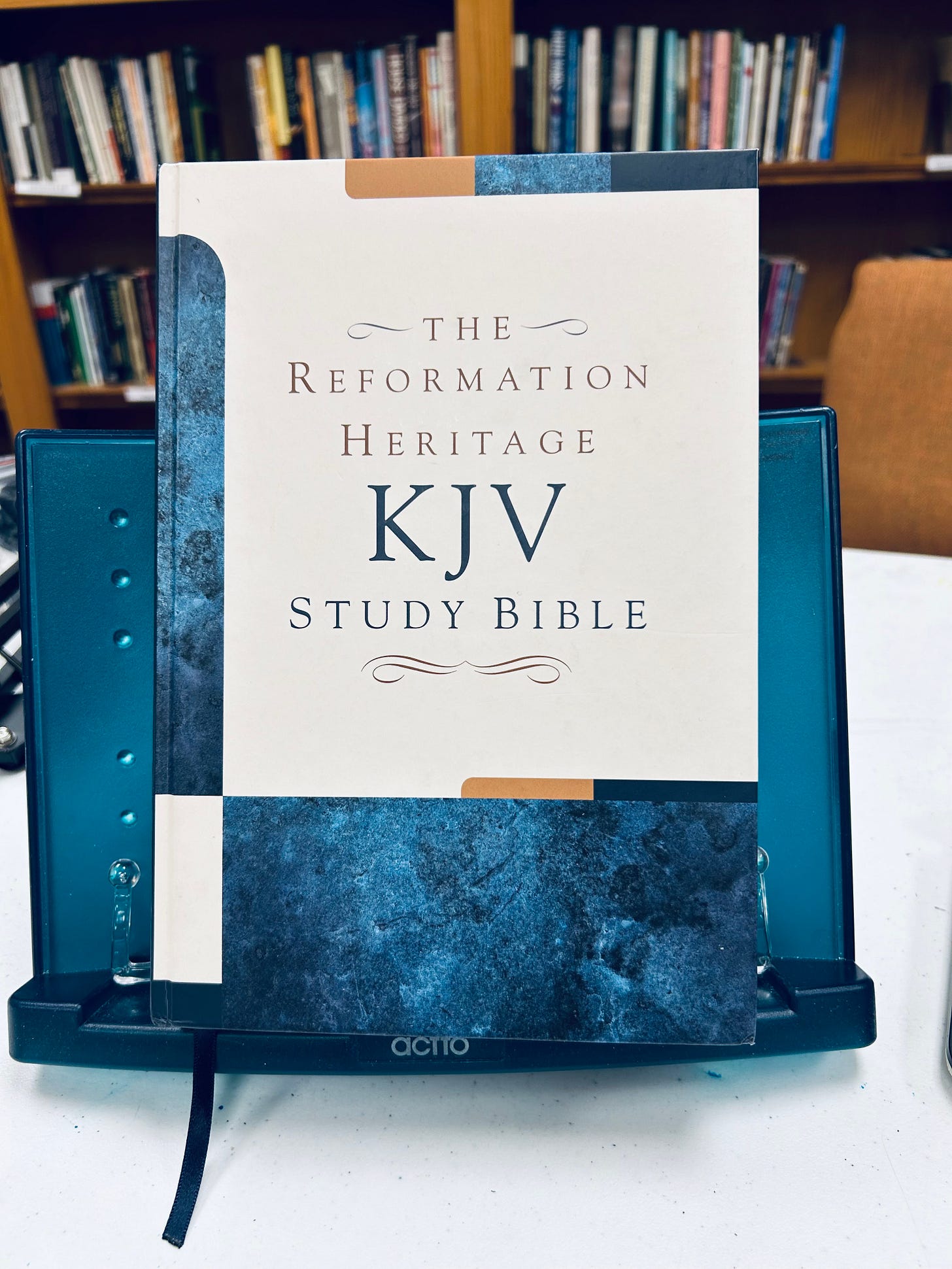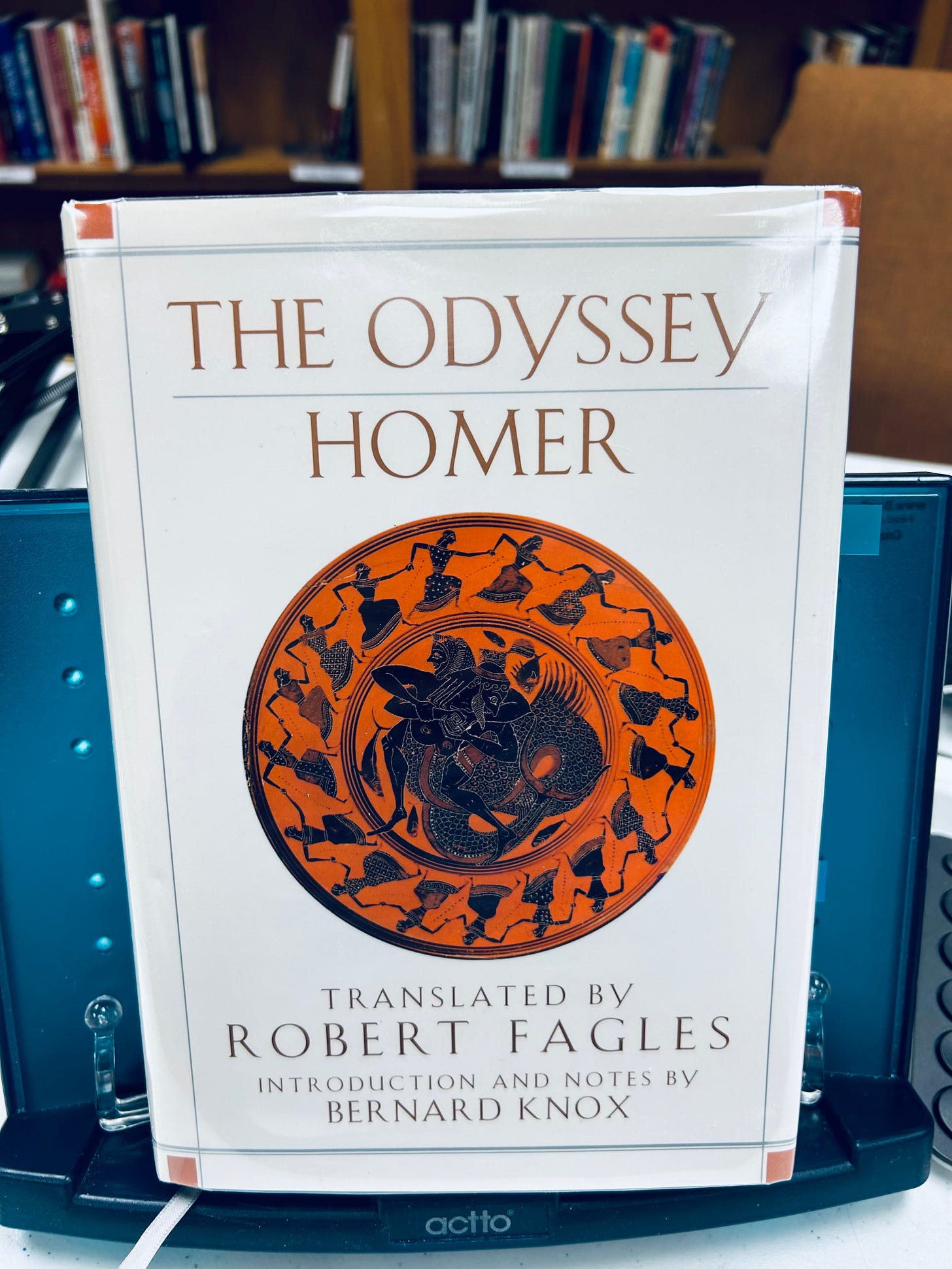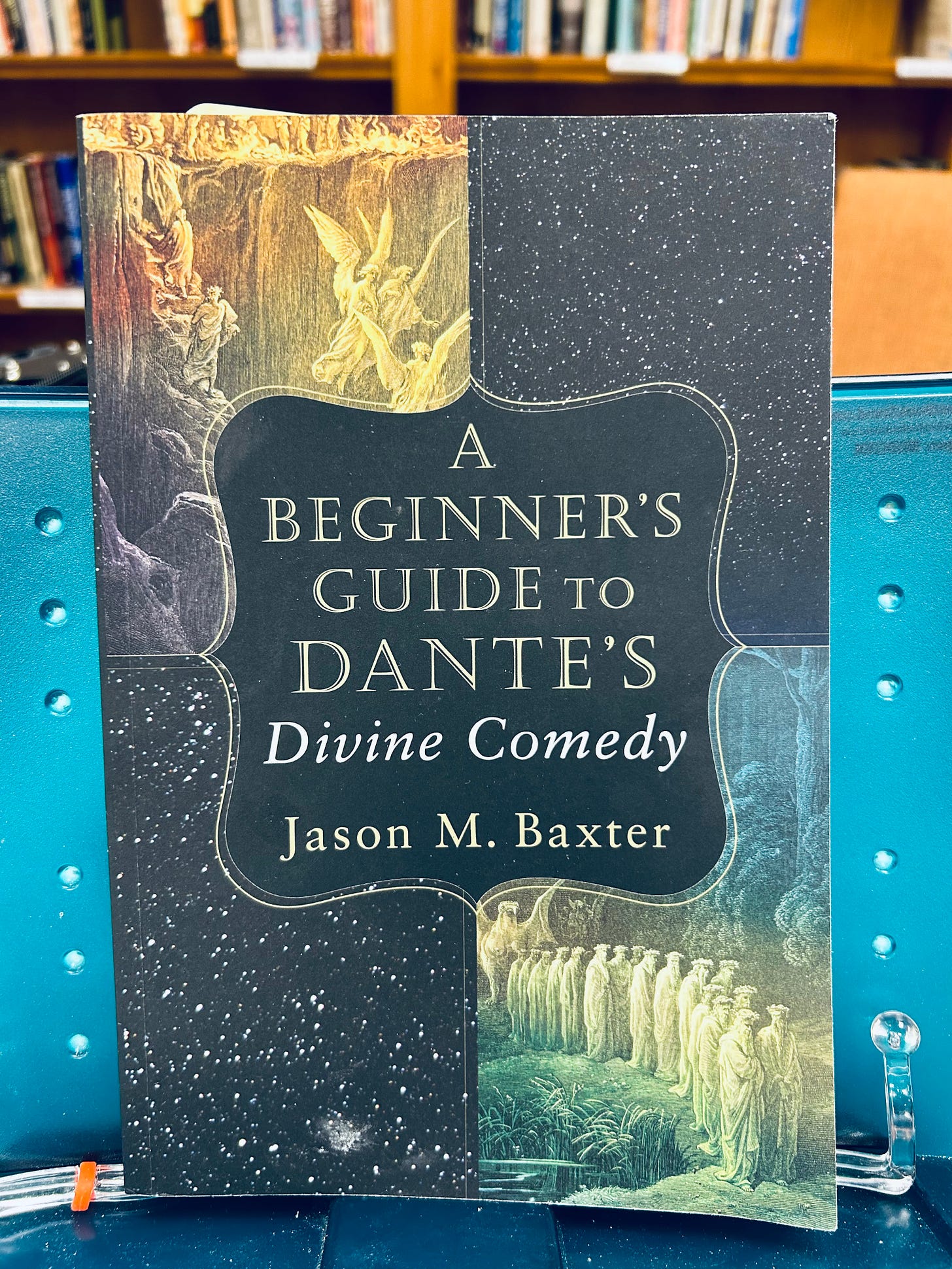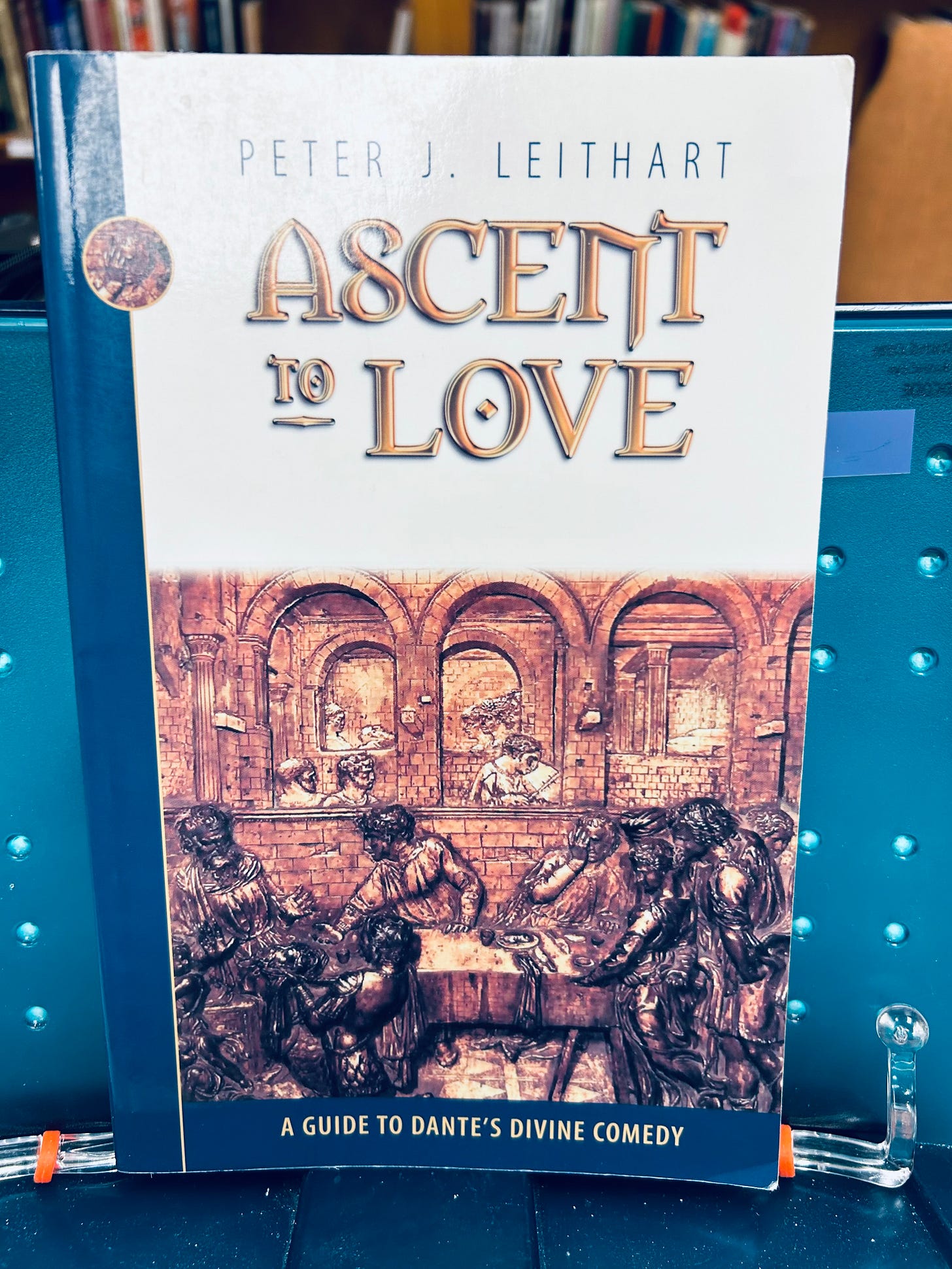It's not that I am ever prodigiously active on my Substack, but I went darker than usual, especially behind the scenes this past November. I even deleted the Substack app from my phone. I managed to get my cellphone “screen time” down under two hours per day. That’s good progress.
All of this was precipitated by a challenge I issued to the congregation I serve as we went into November. I challenged the congregation (myself included) to really up their Bible reading for November. Whatever they were doing, add onto that in a way that made sense for them and their schedule. One app that captures too much of my attention on my phone is the Substack app. Therefore, I deleted it to focus my attention on other things.
I did nearly all of my reading in November out of my Reformation Heritage KJV Study Bible.
Since becoming Presbyterian and Reformed in the mid-1990s, I have read the original NKJV New Geneva Study Bible (also known as the Reformation Study Bible). I have over 30 years of notes, underlining, tears, and smudges in my NKJV. I need a new Bible as my NKJV is being held together by duct tape and now large sewn sections are threatening to escape. Besides, the smaller font size is a strain on these older eyes.
All that time in the NKJV has prepared me to jump easily into the KJV. I found the reading to be no trouble at all found many of the more archaic KJV-isms to be delightful and worth recovering. During family worship, my youngest three children were particularly delighted by the KJV rendering of Joel 2:25:
And I will restore to you the years that the locust hath eaten, the cankerworm, and the caterpiller, and the palmerworm, my great army which I sent among you.
We have all agreed that, upon seeing any bug we cannot identify, we will immediately assume they are either a “cankerworm” or a “palmerworm.”1 I will write a longer post later about the excellence of the Reformation Heritage KJV Study Bible as an entire package.
In addition to upping my Bible reading in November, I also upped my intake of great books. This was also borne out of very pragmatic reasons. My oldest son started his seventh-grade year at our local classical Christian school and he wanted me to read aloud huge chunks of his books while he followed along in his copy. We began with Homer’s Odyssey.
We also used an old friend to help us with insightful commentary into the Odyssey.
Dr. Leithart probably has the best one-sentence summary of the entire plot of Homer’s epic. He writes, “Like the Michael Douglas character who goes berserk when he gets caught in an endless Los Angeles traffic jam, Homer’s hero (Odysseus) is just a guy who wants to get home to see his wife and kid.”2 We reached the end of the Odyssey on December 1.
During November, my son and I also read C. S. Lewis’s retelling of the Cupid and Psyche myth, Till We Have Faces.
I re-read Till We Have Faces this past summer because I knew it was a fairly dense work and wanted to be able to answer any questions my son might have. If you have only read things like Mere Christianity, The Screwtape Letters, or the Narnia Chronicles, then don’t sleep on Till We Have Faces.
I used two excellent reader’s guides along the way to provide additional thoughts to Till We Have Faces.
I recommend Christine Norvell’s guide. She incorporates many excellent insights from Doris Myers’ Bareface and adds many of her own thoughtful observations.
Here are a few of our favorite quotes from Till We Have Faces:
“Grandfather,” I whispered to him, “I am terribly afraid.”
“We must learn, child, not to fear anything that nature brings,” he whispered back.3
“It was when I was happiest that I longed most.”4
The gods never send us this invitation to delight so readily or so strongly as when they are preparing some new agony. We are their bubbles; they blow us big before they prick us.5
But now I discovered the wonderful power of wine. I understand why men become drunkards. For the way it worked on me was—not at all that it blotted out these sorrows—but that it made them seem glorious and noble, like sad music, and I somehow great and reverend for feeling them.6
“You cannot escape Ungit by going to the deadlands, for she is there also. Die before you die. There is no chance after.”7
We finished Till We Have Faces on November 24.
As if that weren’t enough, I began reading Dante’s Divine Comedy every night at bedtime.
Much to my shame, I have never read Dante’s epic poem. Everything is new to me. I am sure I will have more to say about the Inferno (and the rest of the Divine Comedy), but I will save those observations for another time.
I have had “two Virgils” guiding me through the Inferno so far:
Baxter is a stimulating younger scholar with profound insights into Dante. His thoughts on Canto V were so helpful. Leithart is ever the polymath. He takes nearly 70 pages to get to the commentary proper on the Divine Comedy. However, the preface material is worthy of attention, especially chapter one (“‘I Have Come to the Garden’: The Classics, the Bible, and Love in Medieval Literature”).
I am sure that the reading of more great books is ahead in my future. My son still has the rest of his seventh-grade reading ahead: several books from The Chronicles of Narnia, The Screwtape Letters, Virgil’s Aeneid, and two plays by Shakespeare: Julius Caesar and A Midsummer Night's Dream. So much reading, so little time.
The NKJV translates “cankerworm” as “crawling locust” and the “palmerworm” as “chewing locust.” I much prefer cankerworm and palmerworm.
Peter J. Leithart, Heroes of the City of Man: A Christian Guide to Select Ancient Literature (Moscow, ID: Canon Press, 1999), 148.
C. S. Lewis, Till We Have Faces: A Myth Retold (New York, NY: Harcourt Brace, 1980), 14.
Lewis, 74.
Lewis, 97.
Lewis, 224.
Lewis, 279.











Thanks for the nod, @derekghale! I’m glad my study guide was helpful.